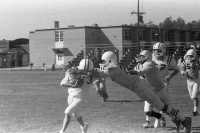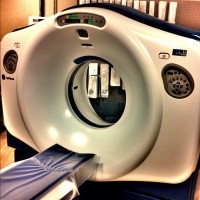Accidents & Violence, Author Interviews, Brain Injury / 29.04.2019
Kids with Head Injuries More Likely to Be Involved with Criminal Justice System
MedicalResearch.com Interview with:
Dr. Joseph A Schwartz PhD
Public Affairs and
Community Service, Criminology and Criminal Justice
University of Nebraska Omaha, Omaha, NE
MedicalResearch.com: What is the background for this study? What are the main findings?
Response: My larger research agenda is focused on identifying the ways in which environmental and biological influences work collectively to shape behavioral patterns across major stages of the life course. I am particularly interested in identifying environmental influences that can change biological functioning or activity to result in behavioral change.
Brain injury was a natural progression of these interests since brain injury is expected to result in changes in the structure and functioning of the brain, which has been linked to meaningful changes in behavior. There have also been a sizable number of studies that indicate that justice involved populations experience brain injury at a rate that is between five and eight times what is observed in the general population. I was fascinated by this finding and thought that brain injury may be a good candidate influence to investigate further. (more…)










 Sean C. Rose, MD
Pediatric sports neurologist and co-director
Complex Concussion Clinic
Nationwide Children’s Hospital
Assistant professor of Pediatrics
The Ohio State University
MedicalResearch.com: What is the background for this study? What are the main findings?
Response: The link between sub-concussive head impacts and declines in neurocognitive function has been reported by some studies, yet refuted by others. There is very little evidence that has been collected in children as they are sustaining these head impacts.
We initiated a multi-year study of youth football players to provide a more in-depth look at the question. We measured head impacts using helmet sensors during the 2016 football season. 112 players age 9-18 completed a battery of neurocognitive tests before and after the football season.
We found that neither the total burden of head impacts nor the intensity of individual impacts were associated with changes in testing performance from pre to post-season.
Sean C. Rose, MD
Pediatric sports neurologist and co-director
Complex Concussion Clinic
Nationwide Children’s Hospital
Assistant professor of Pediatrics
The Ohio State University
MedicalResearch.com: What is the background for this study? What are the main findings?
Response: The link between sub-concussive head impacts and declines in neurocognitive function has been reported by some studies, yet refuted by others. There is very little evidence that has been collected in children as they are sustaining these head impacts.
We initiated a multi-year study of youth football players to provide a more in-depth look at the question. We measured head impacts using helmet sensors during the 2016 football season. 112 players age 9-18 completed a battery of neurocognitive tests before and after the football season.
We found that neither the total burden of head impacts nor the intensity of individual impacts were associated with changes in testing performance from pre to post-season.









